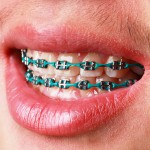
A typical course of orthodontic treatment takes between 18-24months which may be a challenge for compliance and increase risks of caries and periodontal disease. Consequently, reducing treatment times is of interest to both patients and orthodontists. Micro-osteoperforation is one surgical technique that has been investigated with a view to reducing orthodontic treatment times.
The aim of this review was to evaluate the effect of micro-osteoperforations (MOPs) on orthodontic tooth movement.
Methods
Searches were conducted in the Cochrane Central Register of Controlled Trials (CENTRAL), Scopus, PubMed Web of Science, ClinicalTrials.gov and OpenGrey (www.opengrey. eu) databases. Randomised controlled trials (RCTs) investigating the effect of MOPs and published in English were considered. Searches, study selection and quality assessment were conducted independently by two reviewers. The Cochrane Collaboration domain-based risk of bias tool and Grading of Recommendations Assessment, Development and Evaluation (GRADE) approach was used for quality assessment. The primary outcomes were rate of tooth movement and treatment duration. Secondary outcomes included gingival recession, the formation of black triangles, root resorption, anchorage loss, bacteraemia, and pain. Meta-analysis was conducted.
Results
- 8 RCTs (5 split-mouth, 3 parallel) were included.
- 4 studies involved MOPs in only the maxilla, 4 in both mandible and maxilla.
- Follow up periods ranged from 28 days to 16 weeks.
- MOPs were carried out once in 6 studies and repeated at different time intervals in 2 studies.
- 3 of the studies were considered to be at high risk of bias, 2 at unclear risk and 3 at low risk.
- 6 studies reported that MOPs increased tooth movement with 2 studies finding no improvement.
- Only 2 studies reported on the speculated reduction in treatment duration of 62% and 30%.
- 2 studies were included in a meta-analysis of orthodontic tooth movement indicating an insignificant effect with MOPs = 0.01 mm (95% CI; 0.13 – 0.11mm).
- No difference (P >0.05) was found in anchorage loss, root resorption, gingival recession, and pain.
Conclusions
The authors concluded: –
Meta-analysis of 2 low-risk of bias studies showed no effect with single application MOPs over a short observation period; however, the overall evidence was low. The quality of evidence for MOP side effects ranged from high to low. Future studies are suggested to investigate repeated MOPs effect over the entire treatment duration for different models of OTM and its related biological changes.
Comments
We have previously looked at a another review of this topic (Dental Elf – 2nd Sep 2019). This new review includes all 6 RCTs included in the previous review adding 2 new RCTs. While this new review has searched a number of relevant databases and included journal searches, they have not indicated which journals they searched, and they have only considered English language studies. The included studies are small with the numbers of patients ranging from 10-62 and also of short duration lasting from 28 days to 16 weeks. Only 2 split-mouth studies involving just 40 patients were included in the meta-analysis which suggested an insignificant effect. The overall quality of evidence was considered to be low by the authors using the GRADE approach so the findings should be interpreted cautiously.
A 2015 Cochrane review (Dental Elf – 6th July 2015) took a broader view of surgical interventions for accelerating orthodontic treatment and while a number of studies published since then have been included in reviews, they are all small and of short duration. Additional studies should be monitored over a full course of treatment as any potential benefits need to be evaluated in light of their impact over a full course of treatment.
Links
Primary Paper
Sivarajan S, Ringgingon LP, Fayed MMS, Wey MC. The effect of micro-osteoperforations on the rate of orthodontic tooth movement: A systematic review and meta-analysis. Am J Orthod Dentofacial Orthop. 2020;157(3):290–304. doi:10.1016/j.ajodo.2019.10.009
https://pubmed.ncbi.nlm.nih.gov/32115107/
Review protocol on PROSPERO
https://www.crd.york.ac.uk/prospero/display_record.php?RecordID=118642
Other references
Dental Elf – 2nd Sep 2019
Dental Elf – 6th July 2015
